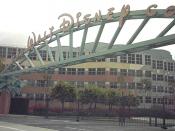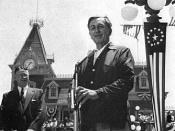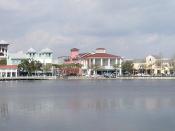When Michael Eisner accepted the job as CEO of the Walt Disney Company in 1984, many of his peers questioned why the highly successful executive, and bullish micromanager, would leave his position as President of Paramount and take on the challenges of the failing amusement park company whose corporate culture was serving guests. It was founder Walt Disney's belief that his company did not have customers, but rather guests, and his human resources were never called employees, they were cast members whose jobs were to create the Disney magic in dress, mannerism and guest services.
Disney's earliest successes relied on Walt's people-oriented style of leadership; his genuine concern for his cast members and guests. Following the 1966 death of Walt Disney the company fell into decline, animated features were released once every 4 years, there were no live-action films, attendance at the amusement parks was down and there was an increase in competition, the company had one television show in production; the stoic Wonderful World of Disney, even Mickey and Minnie were talking divorce.
The Disney Board, led by Roy Disney, realized that they needed a transformational leader to capitalize on the company's brand recognition. Eisner's first task was reframing the challenges and opportunities he faced at Disney, and he started by accurately defining what he wanted Disney to be-the global leader in entertainment. With the desired future end-state as his visionary plan, he began the restructuring by bringing in his own team of managers, many from outside his specific industry.
During Eisner's 20-year reign at Disney, his management team included many individuals who are now notable in their own right. Jeffrey Katzenberg left Disney to co-found DreamWorks and later filed a $250 million dollar claim against his former employer, Paul Pressler, left the kingdom to head the clothing giant...


